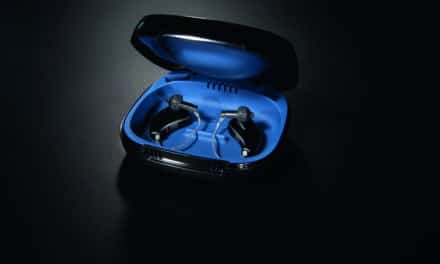Otometrics A/S, a global manufacturer of audiology instrumentation and software solutions, announced the results of a new integration with hearing instrument manufacturer Oticon. The two companies have been working to implement integrated verification capabilities based on the new Inter Module Communication 2 (IMC2) standard. According to Otometrics, this method is designed to enable integrated and automatic verification between Oticon hearing instruments and Otometrics Aurical, a modular hearing instrument fitting and verification tool.
“We are excited about this new compatibility with Oticon,” said Peter Kossek, senior product manager at Otometrics. “We look forward to helping hearing care professionals providing Oticon hearing instruments by streamlining their fitting workflow so they can satisfy more clients with improved efficiency, a better fitting experience, and properly fitted hearing instruments.”
Inter Module Communication 2 – the new standard for integration
Otometrics fitting solutions are designed to be fully enabled for IMC2, a new standard for integration between hearing instrument fitting and real-ear modules since December 2015. IMC2 is software that allows fitting and measurement modules to “talk” to each other directly. This allows the verification process to be guided and automated, helping to provide hearing care professionals with a simplified and more efficient workflow, according to the company’s announcement.
REM AutoFit in Oticon Genie and Genie 2 streamlines verification workflow
According to the company’s announcement, Oticon is reportedly the third major hearing instrument manufacturer to date to include Otometrics Aurical in their hearing instrument fitting software. The integration between Aurical and hearing instrument fitting software—including ReSound Aventa using AutoREM, Phonak Target using TargetMatch, and now adding REM AutoFit in Oticon Genie and Genie 2—is designed to make it possible to verify hearing instrument fittings to a prescriptive target automatically with minimal user intervention and training.
“The scenario is simple,” said Kossek. “Aurical enables an easier flow because of the built-in IMC2 capabilities. So, as a hearing care professional, you only have to concentrate on one user interface, and the guided workflow gives instructions at every step of the process. This saves time on the target-based verification part of the fitting process and leaves more time for counseling and other activities. The result is time-savings, a better hearing instrument fit, and a happier customer with unprecedented easy verification.
“With increased competition—one of them being over-the-counter devices—and reduced reimbursement, hearing care professionals need new ways to stand out, streamline their fitting processes, and satisfy more clients. This is well recognized by the industry, as more and more hearing instrument manufacturers are looking at integrated verification as one way to make real-ear measurements a standard part of the fitting workflow. And Otometrics is ready to help make the process easier by being the first to provide our partners with industry-standard solutions.”
Sivantos is next
In addition to IMC2 solutions with Phonak, ReSound, and Oticon, Otometrics is also working on a project with hearing instrument manufacturer Sivantos to create an integrated solution between Connexx Eight and Aurical.
“We look forward to helping hearing care professionals deliver Sivantos hearing instruments more efficiently very soon,” said Kossek. “With this trend, there’s no doubt that IMC2 with Otometrics Aurical is becoming the industry standard.”
Source: Otometrics
Image: Otometrics





